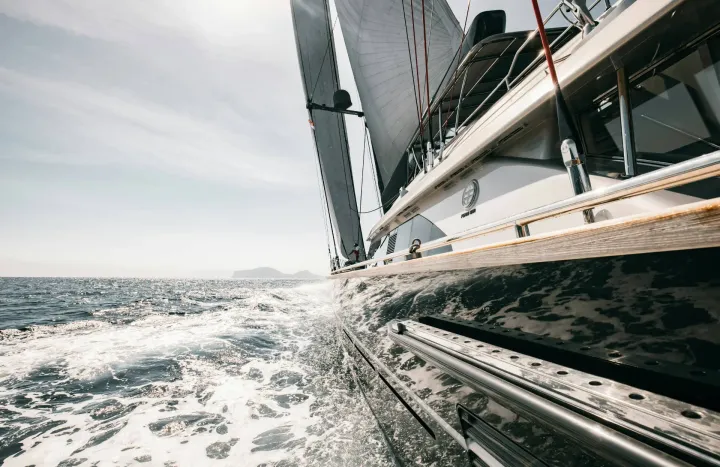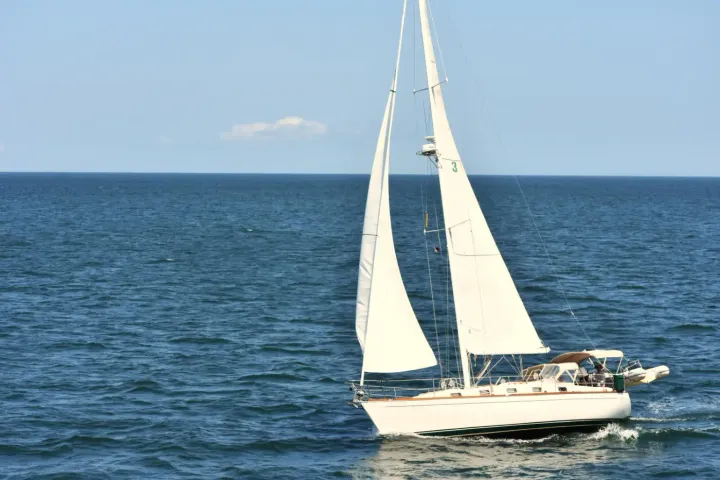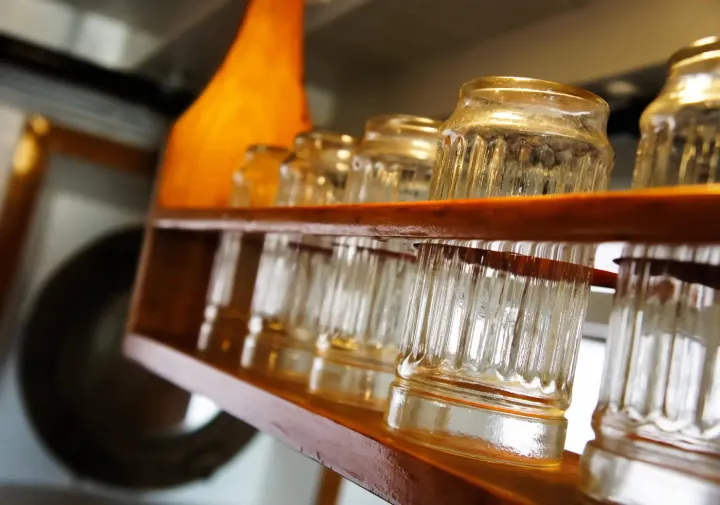Browsing the boat market? Read on for a list of the most essential steps to consider when buying a sailboat on any type.
Buying a sailboat is an exciting experience for any sailing enthusiast. However, it requires some consideration to ensure you get the right boat for your needs, in good condition, and at a fair price.
The following guide on the boat buying process covers how to choose your boat, what to consider when visiting and testing out the boats, key notes for making an offer, legal components such as contracts and insurance, and finally, some post-purchase recommendations to ensure your boat stays in top condition while it’s with you.
If this sounds at all complicated or laborious, don’t worry. We are here to help. Read on for a detailed guide on how best to go about purchasing your ideal sailboat. By the end of this article, you will understand the key elements of the boat buying process along with certain considerations to bear in mind when shopping around.
To ensure this article suits all boat buyers alike, we have covered the boat buying process for buyers shopping in both the new and used markets.
Choosing your boat
The following three steps of the boat buying process are not necessarily in order. Why? Well, whether you begin with the type of boat you want, the budget you are looking at, and or where is best to look depends entirely on your specific situation.
For instance, if you are completely new to the world of sailing then you should probably begin by sorting out what type of boat you would like which likely requires some research, and maybe even jumping to step 3 and browsing what is out there on the market.
In contrast, if you have a strict budget and are looking for a very expensive type of boat then you may need to jump between all three steps to see what is feasible.
Therefore, take each of the following steps as they apply to your unique situation.
1. What type of boat are you looking for?
Begin with the question, “what is the primary purpose of your boat?”.
Are you looking for something to take the family out into the harbor on every so often or something to sail around the world? Will you be passing through canals and traveling under bridges or sailing the open sea? Do you need heavy-duty motors or just a small aid for getting out of the bay? Are you looking to impress your colleagues with cocktails on the water or for a carefree learning vessel for your kids to mess around on?
Answering any of these questions will help you narrow down your search.
Just as with a vehicle, for which you consider the terrain you frequent, think about the bodies of water and routes you intend to travel in this boat. If you anticipate riding through the rivers and canals of cities, then you will need a boat that ticks the following boxes:
- Narrow
- Removable sails
- Shorter mast
- A motor
If you intend on sailing the world and living aboard this boat then you will need to consider different elements entirely. Check out the list below for some of the most popular types of boats.
- Beach Catamaran: usually about 14-20 feet in length, most often used for day sailing.
- Cruising Catamaran: around 25-50+ feet long, a larger version of the above
- Cruising Sailboat: 16-50+ feet long, often used for racing
- Daysailer: around 14-20 feet long, the best option for those new to the sailing world
- Motorsailer: 35+ feet long, usually luxury boats with inboard motors and accommodations below deck
- Racer-Cruiser: 25+ feet long, hybrid cruising and racing boat
- Racing Sailboats: 20-70+ feet long, used for racing, not meant for cruising
- Sailing Dinghies: Under 15 feet long, intended for solo or couple sailing
2. Deciding your budget
As you may imagine, the costs of these different types of boats vary drastically.
The boat’s price tag largely depends on the type of boat, its size, and its condition.
A new boat is always going to cost more than its used counterpart unless, of course, the second-hand boat is historical or significant for a specific reason.
When calculating the figure that you wish to spend on your boat, be sure to consider the additional costs that come with owning a sea-faring vessel. These include but are not limited to boat storage, whether you will require a driver or crew (depending on the function of the boat you are purchasing), maintenance costs, insurance costs, taxes (which will depend on the usage of the boat), winterizing fees and docking fees.
3. Figuring out where to look
Now, the above steps influence where you will find your ideal boat. Firstly, you will need to choose whether you are shopping new or second-hand as some marketplaces will have both, but most are tailored to one or the other.
Consider the following:
Benefits of buying new
- You don’t need to worry about the condition of the boat
- You can buy exactly what you want
- You can customize it to your specifications
Benefits of buying second hand
- It’s cheaper
- It’s more sustainable (the manufacture of new boats is tough on the environment)
- You can test it out as its already been manufactured (and sailed)
Now, of course, many of these benefits can be interchanged depending on the specific boats you’re looking at.
If you are buying new then head to your local marina to see if they can get you a deal or right to the manufacturer’s site if you know which brand you are looking to purchase from.
If you are buying used then the various marketplaces online are your oyster.
Our tip: go to a marketplace that exclusively deals with marine vessels and even sailboats specifically as they will understand and thus, work within the market better than the more generalized sites.
Visiting the boat
Always. Visit. The. Boat.
If it is a new boat, then go to the marine and see the boat’s floor model or as similar a model as they have available for viewing. Just as with any major purchase, you want to see where you are spending your money before you commit to it.
If you are buying a used boat, then this is perhaps even more prudent. Do not buy off of pictures. Inspect the boat yourself and better yet, hire a marine mechanic to inspect the bones of the boat for you.
If you cannot get to the boat because it is located far from you and will need to be transported to your location, then we recommend not selecting that boat. Instead, shop locally or make the trip to the boat particularly if it is very expensive.
Testing the boat
As with any vehicle, you want to be sure that it functions well. You never want to find yourself owning a boat that leaks or has a sticky sail that you didn’t notice when inspecting it on dry land.
Further, a boat is a special purchase and oftentimes, a personal one. You want to be sure that it feels good to sail and that you feel comfortable operating it and the only way to do that is to test it out.
Making an offer
When you find your ideal boat, it’s time to make an offer.
If you are buying new then you will have less wiggle room when it comes to your offer. However, you can still see what you can negotiate into your purchase whether that is reduced legal fees, the inclusion of a trailer for the boat or something along those lines.
Legal steps
Ensure that every step of the boat purchasing process is done legally. You want to ensure the dealer is an authorized boat dealer if you are buying new. And if you are buying used, you want to ensure you have proper proof of purchase and that the boat has been legally transferred into your name.
Taxes may vary as well. For instance, the taxes on a luxury yacht will be proportionately higher than those on a one-person dinghy.
You will also need to purchase the right insurance for you.
If you are spending over a couple of thousand dollars on your boat then we highly recommend getting legal advice to ensure you have done each of the necessary steps.
Post-purchase recommendations
Now that you are the official owner of your boat, remember the following:
- Maintain your boat diligently
- Get it properly winterized if you live in a climate that freezes in the winter
- Cover your boat in the rain if it has any non-all-weather material
Final Thoughts
Now that you are well-versed on the intricacies of the boat buying process, you can begin your journey. Remember to begin with some research on what type of boat you want, your budget, and where best to purchase such a boat. Follow that up with both a visit and a test (if the boat is not yet made then try at least a similar model). Finally, remember our considerations for your offer and the legal steps as well as the post-purchase maintenance of the boat.
Lastly, perhaps the best part of buying a boat is the name selection. Be sure to give her a fantastic name before you head out on your first expedition as any sailor will know, a nameless boat is bad luck on the sea.



